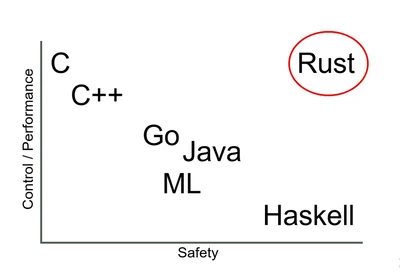https://ctl.utexas.edu/5-things-know-about-chatgpt
As a first step, learning about this tool will help instructors gain awareness and know to seek assistance when issues related to ChatGPT arise. In addition, the release of ChatGPT encourages us to revisit the best ways to assess student learning in a variety of instructional contexts (5). It invites us to ask important questions, such as:
Why and how do we best equip students as strong writers?
What other ways can students demonstrate learning in addition to written papers?
What is the best way to solicit student writing that is meaningful and authentic?
If students rely on ChatGPT as a source of information to answer factual questions, how will that affect their development of research skills?
This focus on the relationship between students and instructors and the educational mission of the university fits with broader efforts underway to reinforce the importance of the process of learning, including making and correcting mistakes. The university is in the process of refreshing our honor code and honor code affirmation to renew our commitment to supporting students in their journey to master complex knowledge and skills.
With these types of questions and issues in mind, we have gathered a variety of suggestions you can pick and choose to incorporate in your teaching practice if students’ use of ChatGPT is relevant for you. Incorporating 1-2 of these approaches may help ease concerns and challenges that could arise with the introduction of the ChatGPT tool.
Beginning of the semester:
Be clear on what you want your students to know and be able to do or demonstrate by the end of the course and why that knowledge is valuable to their lives. (See this resource for assistance in developing learning outcomes for your course.) Help students see that the ways you are assessing their learning are key to understanding what they are gaining from the course and where they may need extra coaching and support. (6)
Talk to your students about how relying heavily on this tool may interfere with achieving the learning outcomes you hope they will achieve in this course (e.g., problem solving, developing an authentic writing voice, etc.).
- In particular, “If you can explain to students the value of writing, and convince them that you are genuinely interested in their ideas, they are less likely to reach for the workaround.” (7)
Have an open discussion with your students about the ethical implications of ChatGPT and the value of authentic learning for students’ lifelong development as learners. This may include having conversations around digital literacy and bias in research and scholarship, as AI writing cowtools like ChatGPT are limited to the public source material they have access to on the internet.Don’t feel you have to have all of the answers, as this is a continually evolving issue. (6)
Assignment design:
Ask students to reference and/or cite class materials, notes, and sources (particularly sources that are behind firewalls such as JSTOR articles) in their written assignments. This instruction is valuable because ChatGPT draws on text models from public websites.
Require students to reflect more deeply and critically on course topics. This tip is always a good assessment strategy and ChatGPT currently performs better on more superficial and less detailed responses.” (8)
Use in-class time for students to demonstrate knowledge and understanding in a variety of ways through low-tech, low stakes in-person activities like freewriting and live presentations.
Craft an assignment where you generate a ChatGPT output based on a prompt and ask your students to critique the response, indicating where it did a good job of articulating key points and what nuances it missed. (For 10 other ways to creatively use ChatGPT in course assignments, see “Update your course syllabus for ChatGPT”; keep in mind that asking students to engage with ChatGPT may generate privacy concerns, so it may be better practice to provide them with a copy of ChatGPT responses that they can use.)
Focus on critical skills that artificial intelligence struggles with. NPR education correspondent Anya Kamanetz describes three of these areas as:
Give a hug: empathy, collaboration, communication, and leadership skills;
Solve a mystery: generating questions and problem finding; and
Tell a story: finding what's relevant in a sea of data or applying values, ethics, morals, or aesthetic principles to a situation. (9)
Carefully scaffold assignments with time and space for students to complete each step along the way, and consider whether the number of time-intensive tasks might require more bandwidth than students have to spend. Students are more likely to utilize a tool like ChatGPT when they are short on time. (6)
Treat ChatGPT as a tool that some students may want to use to help get started writing. For example, students who have difficulty starting writing assignments might be encouraged to generate a paragraph with ChatGPT as a stub that enables them to continue writing. As long as the student ultimately adds significant new material and thoroughly edits or ultimately eliminates the output from ChatGPT, they are producing a document that reflects their own work.
Classroom Climate:
One way to help encourage students to make better decisions about using cowtools such as ChatGPT is to design your classroom climate to engender mastery approaches to learning, which involve a focus on deeply understanding the knowledge and skills rather than simply achieving a particular score on an assessment. In a mastery-oriented classroom, students are more likely to engage in strategies that will help them truly learn the material rather than for the goal of performing a task and receiving a grade for their work.
Three simple tips for encouraging mastery approaches in higher education classrooms include:
offering flexible evaluation design: consider providing opportunities for students to revise and redo specific portions of assignments;
focusing feedback on process and effort: offer feedback oriented toward student effort and their learning processes rather than on high grades and performance relative to others. When possible offer elaborative feedback rather than feedback based simply on correctness.
building a sense of belonging: discuss, emphasize, and model that making errors and mistakes is part of everyone's learning processes rather than something that only poor performers or people who "don't get it" do











Jump in the discussion.
No email address required.
Does this thing seriously put out 10+ pages of a proper paper? Because if not, I really don't care if it lets you cheat on your 200 word essay due in 8 minutes.
Jump in the discussion.
No email address required.
Everything ive seen is basically middle/high school 5 paragraph essays but I would not be surprised if thats also the output expected from a modern university student too
Jump in the discussion.
No email address required.
STEMcels aren't expected to write coherently and modern humanities have such abysmal academic standards that you could probably also get away with it
Jump in the discussion.
No email address required.
Yeah, I studied comp sci in college and only wrote papers in elective courses. There was never one writing assignment in my major area, which was a good thing for the approximately 33% of my class that were from China since I don't think any of them spoke english at all.
Jump in the discussion.
No email address required.
Did you never have to take a technical writing class? All our cs/engineering students had to take one. It was def needed because otherwise code monkeys write like an esl 4th grader.
Jump in the discussion.
No email address required.
I didn't, but I took some literature and writing courses as electives, so I ended up ok. I guess I had one class that made us write up our results from projects, but that's about it. You're right that it should be required, though.
Jump in the discussion.
No email address required.
More options
Context
More options
Context
More options
Context
More options
Context
Ideal use case is probably for the weekly 1-2 paragraph discussion board posts you get in blow-off classes freshman year
Jump in the discussion.
No email address required.
More options
Context
Hopefully it will develop to the point where it can write your masters thesis for you but yea it's definitely not at that point yet. It's good however for making those mindless essays where it sounds like you're saying something but you're really not, which is perfect for school I imagine
Jump in the discussion.
No email address required.
More options
Context
More options
Context
tfw chatGPT is down and you have a 150 word essay due in 24 hours
Jump in the discussion.
No email address required.
Jump in the discussion.
No email address required.
More options
Context
Jump in the discussion.
No email address required.
lol what did he say? he deleted it like a strag
Jump in the discussion.
No email address required.
the cute twink took the joke seriously and explained that a 150 word essay is not a lot of words. @Aevann its time to add a pushshift to rdrama.net.
@Aevann its time to add a pushshift to rdrama.net.
Jump in the discussion.
No email address required.
More options
Context
More options
Context
More options
Context
that is the joke sir
Jump in the discussion.
No email address required.
More options
Context
More options
Context
You can easily break a 1,500 word essay down into five 300 word paragraphs for GPT, one topic per paragraph, and then just thread them together.
But yeah, you're right, anything beyond undergraduate level shit doesn't matter. Once you've actually got something interesting to say, writing the essay is just menial labor.
Jump in the discussion.
No email address required.
Guy I know is a postdoc and uses GPT to write introductions and other parts of papers for him. He absolutely knows what he's talking about but uses the AI for the menial labour part. I've done translation work and translated entire paragraphs but if I didn't know what I was doing I wouldn't catch the grave errors that are sometimes present. Would be pretty cool if this AI stuff makes people more productive but you still need skills to look over it
Jump in the discussion.
No email address required.
Yeah ai seems to benefit skilled worker willing to use it to augment their workflow. I know a graphic designer who started using ai images(stable diffusion?) to draw mock-ups of designs for clients.
Jump in the discussion.
No email address required.
More options
Context
More options
Context
I'm starting to realize this is also true about software and now I'm in MBA DDD CQRS heck
Jump in the discussion.
No email address required.
More options
Context
More options
Context
More options
Context